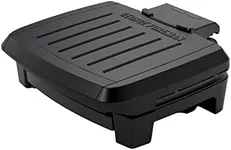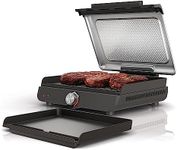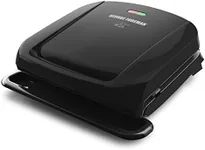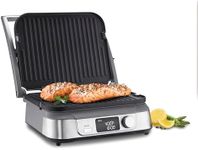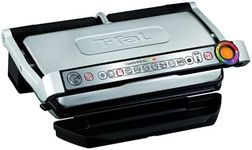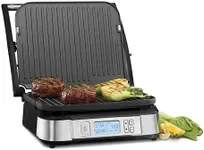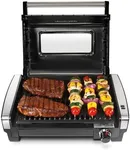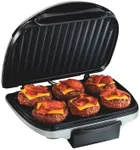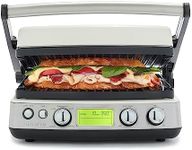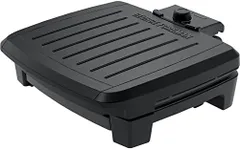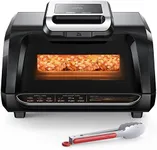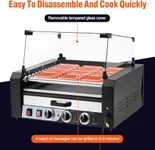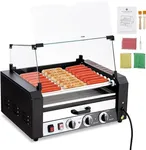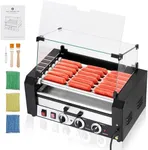Buying Guide for the Best Indoor Flat Grills
Choosing the right indoor flat grill can significantly enhance your cooking experience, allowing you to prepare a variety of meals with ease. When selecting an indoor flat grill, it's important to consider several key specifications that will determine how well the grill meets your needs. Understanding these specifications will help you make an informed decision and ensure you get the best product for your cooking style and preferences.Cooking Surface AreaThe cooking surface area refers to the total space available for grilling food. This is important because it determines how much food you can cook at once. If you often cook for a large family or entertain guests, a larger surface area will be beneficial. Conversely, if you typically cook for one or two people, a smaller surface area will suffice. Cooking surface areas are usually measured in square inches, and you can find grills ranging from compact sizes (around 100 square inches) to larger models (over 200 square inches). Choose a size that matches your typical cooking volume.
Temperature ControlTemperature control allows you to adjust the heat level of the grill, which is crucial for cooking different types of food properly. Some grills offer adjustable temperature settings, while others have fixed settings. Adjustable temperature controls are more versatile, allowing you to cook delicate items like vegetables at lower temperatures and sear meats at higher temperatures. Look for grills with a wide temperature range (e.g., 200°F to 450°F) if you want more control over your cooking.
Non-Stick SurfaceA non-stick surface prevents food from sticking to the grill, making it easier to cook and clean. This feature is particularly important for grilling items like fish or pancakes that can easily stick. Non-stick surfaces can vary in quality, with some being more durable than others. Look for grills with high-quality non-stick coatings that are PFOA-free for safer cooking. If you plan to use the grill frequently, investing in a model with a durable non-stick surface will save you time and effort in the long run.
Drip TrayA drip tray collects excess fat and juices that drip off the food during cooking. This is important for reducing mess and making the grill easier to clean. Drip trays can vary in size and design; some are removable for easy cleaning, while others are fixed. If you prefer a low-maintenance option, look for a grill with a removable and dishwasher-safe drip tray. This feature is especially useful if you cook fatty foods like bacon or burgers.
Heat DistributionEven heat distribution ensures that food cooks evenly across the entire surface of the grill. This is important for achieving consistent cooking results and avoiding hot or cold spots. Some grills have advanced heating elements or designs that promote even heat distribution. When evaluating this feature, consider user reviews and product descriptions that highlight the grill's ability to maintain consistent temperatures. If you often cook foods that require precise cooking, such as steaks or chicken breasts, this feature will be particularly valuable.
Portability and StoragePortability and storage refer to how easy it is to move and store the grill. This is important if you have limited kitchen space or plan to use the grill in different locations. Some grills are compact and lightweight, making them easy to store in a cabinet or take on the go. Others may have foldable designs or built-in handles for added convenience. Consider your available storage space and how often you plan to move the grill when choosing a model.
Ease of CleaningEase of cleaning is a crucial factor, as it affects how much effort you need to put into maintaining the grill. Features that contribute to easy cleaning include removable plates, dishwasher-safe components, and non-stick surfaces. Grills with these features can be quickly disassembled and cleaned, saving you time and hassle. If you want a low-maintenance option, prioritize grills with easy-to-clean designs and materials.
